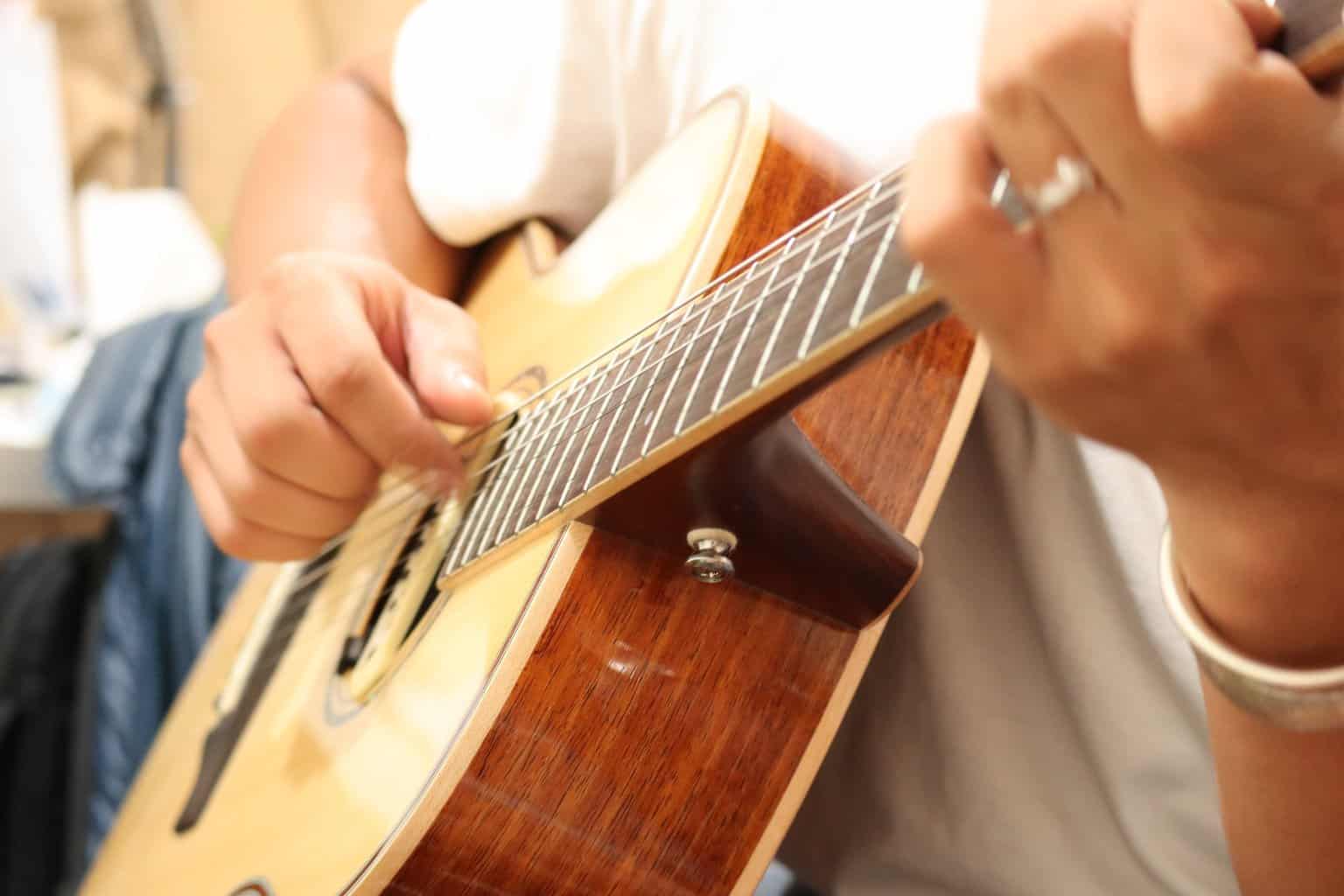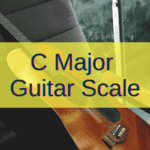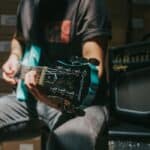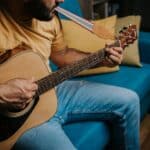The guitar is an amazing, complex instrument, which has a wider range of possibilities than people think.
However, not everything has to be complex, there are some easy chord shapes that adjust easily to beginners: cowboy chords.
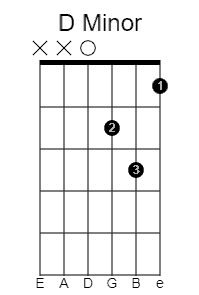



Cowboy chords are just basic, beginner-level chords mainly played with open strings and within the first three frets. These types of chords are easy to learn because they mostly involve just two or three fingers from the fretting hand.
In this article, I will try to evacuate every doubt that may come up regarding cowboy chords. If you find this topic interesting, continue reading to the end!
You will get information about the origin of cowboy chords, how can you play them, and even some usual progressions to start practicing.
Are open chords and cowboy chords the same?
For some players, the term “cowboy chords” may be new or even confusing but let me tell you that these kinds of chords are not different from the well-known open chords.
Actually, is just another way to call them, so they are synonyms just as, for example, power and fifth chords which are exactly the same.
What are the cowboy chords on guitar?
Cowboy chords refer to easy-to-play open-position chords historically used in country, folk, and western music but currently used in pop music.
As they are played in the first position (first three frets) they include open strings plus they are triads, and chords that require three notes so you will mainly have to use only your index, middle, and ring fingers from your fretting hand to play them.
Cowboy chord diagrams
Now, to put a figure to words, here are the basic guitar chords that are usually called “Cowboy chords”:



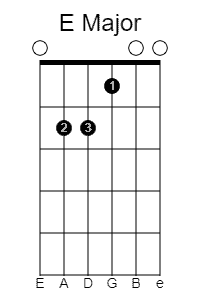




Why are these called cowboy chords?
When we talk about open chords we can notice that their name comes from the open strings applied to play them, but what about cowboy chords?
Well, they have their origins in country and folk songs.
Historically, folk and traditional singers were more concerned about the lyrics and didn’t pay special attention to the instrumental section.
The guitar worked as an instrument to deliver the lyrics, to string along with the vocals, and as open chords are the easiest to play, traditional singers were never concerned about barre chords.
Furthermore, you can picture a cowboy sitting at a campfire, singing traditional songs that only used three simple chords.
In addition, although jazz musicians don’t usually play chords of this kind, they are aware of them.
Jazz guitar players are not really fond of cowboy chords, they avoid using open chord positions, and they hardly ever use minor or major chords without being altered or extended.
That’s why they use the term cowboy chords to refer to easy open chords in a derisively way.
Some purist musicians hate to see cowboy chords in songs and tend to name them “baby chords”.
Can you use cowboy chords for any genre of music?
Although we earlier said that cowboy chords have their roots in country and folk music, they are not relegated only to those two musical genres.
This type of chord will definitely work with every genre.
If you take a look, you will notice that cowboy chords appear in rock, pop, folk, or even in metal and samba.
Cowboy chords are just another element that you can find in your instrument and it would be silly to limit it just to a single style.
What is more, although they are mainly played on acoustic guitar due to the low end they provide, they can be also used on electric guitar.
What is even better, they could sound great adding some effects such as reverb or distortion.
Can you play any song with the cowboy chords?
In many of our articles, we point out that there are no rules in music, and that phrase fits perfectly to answer the question above.
You can absolutely play songs with the cowboy chords, they are simple, easy to learn, and can work in any song.
What is more, playing a song using cowboy chords is useful for beginners or even for those who have been playing guitar for some time.
You can play the songs you like by using cowboy chords, no matter if they are complex or not, in that way you will be simplifying difficult chord shapes and replacing them with easier open chords.
What are some famous songs that use cowboy chords?
You may think that we talked a lot about these chords but how can I start using them? Well, the time has come.
I’m going to share with you some popular songs that use cowboy chords plus links to a video lesson and their chords!
Sweet Child O’ Mine
Who doesn’t know the most famous Guns N’ Roses’ song?
This piece uses seven cowboy chords in total and as it is truly popular everyone will sing along with you.
Here’s a lesson:
Have You Ever Seen The Rain
Here we have a classic song by Creedence Clearwater Revival, the well-known country band.
A very nostalgic, sweet song quite easy to play, it has mainly open chords and appears the F chord which is a barre chord.
Here’s a lesson:
Crazy Little Thing Called Love
Last but not least, we have another extremely famous piece, this time by the amazing group Queen.
Although this song could make you struggle with the strumming pattern, once you get the hang of it becomes pretty playable plus every person in the room will be singing the chorus out loud.
Here’s a lesson:
What are the easiest cowboy chords to learn?
We know that cowboy chords could be applied in any genre, in any piece and we already have popular songs that use them, so what we need to do know is mentioned which of them are the easiest.
As a matter of fact, cowboys chords are all simple, just two or three fingers from your fretting hand, some open chords and that’s it.
However, some of them are easier than others, for example, Em.
In this case, the Em chord is simple because you just need to place two fingers (preferably middle and ring) in the second fret of the fourth and fifth strings and leave the rest of the strings open.
Another easy chord could be A, you place the index, middle, and ring fingers in the second fret of the fourth, third, and second strings.
Three fingers hold the notes of the chord and the rest of the strings open except for the low E string.
One more uncomplicated cowboy chord could be E, which is similar to its minor counterpart but you will need one more fretting finger.
To play it, you will do the same as in Em but you will have to add your index finger and place it in the first fret of the third string.
Moreover, I will leave a link to a video lesson with a bunch of easy cowboy chords, especially for beginners.
Take a look at it and start using these wonderful chord shapes:
Do cowboy chords work well together?
One of the most interesting things about cowboy chords is that they are not only easy to play and learn but also allow you to play plucked patterns with open strings.
This technique will reinforce and enrich your sound and playing style but not every chord will sound good by applying this method.
You need to bear in mind that due to the concept of musical scales, not all cowboy chords work well together.
By playing only cowboy chords in a row you could be accidentally playing some intervals such as diminished fifth which sound dissonant, this may produce in some cases uncomfortable sounds while playing.
Common cowboy chord sequences
We reach the end, up to this point I would like to show you common cowboy chord sequences.
You can take a look at them and practice the different chord progressions to be more related to these kinds of chords.
The first sequence is I – iii – IV – V, a common progression that sounds quite shiny and bright, by using C as a root it would be C – Em – F – G, and if you prefer D as the root you will get: D – F# – G – A.
Although we cannot include A as a root note because the sequence will have C#m as its third (A – C#m – D – E) which is not a cowboy chord, is also a simple chord progression with most cowboy chords.
Another famous sequence is i – VI – III – VII, a progression that can be found in hundreds of popular songs.
You can use Am as the root and the sequence will be Am – F – C – G, by using Dm as starting point the progression should be Dm – A# – F – C, although we have A# which is not a cowboy chord, is a common sequence to play easily.
Last but not least, this may be the most common sequence in pop music I – vi – IV – V. Also known as “the 50s progression”, composed by C – Am – F – G if we think of C as the root note.

Hello there, my name is Ramiro and I’ve been playing guitar for almost 20 years. I’m obsessed with everything gear-related and I thought it might be worth sharing it. From guitars, pedals, amps, and synths to studio gear and production tips, I hope you find what I post here useful, and I’ll try my best to keep it entertaining also.

